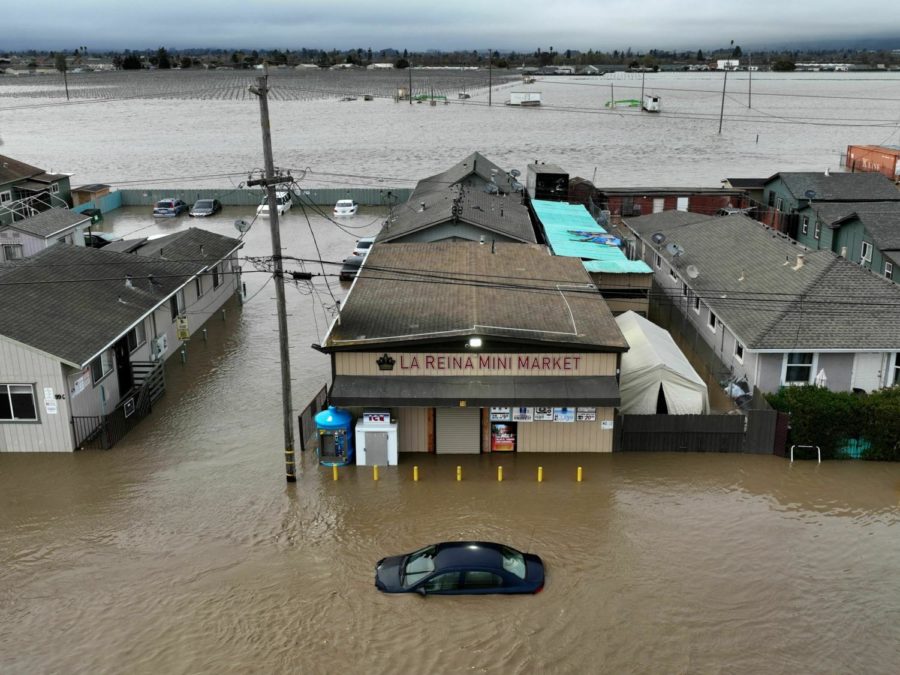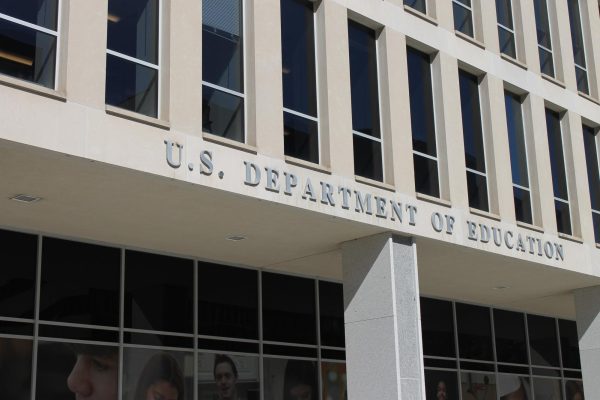Atmospheric Rivers Wreak Havoc in “The Golden State”
This aerial photograph shows a car and market shop in floodwaters in Pajaro, California on Saturday, March 11, 2023. – Residents were forced to evacuate in the middle of the night after an atmospheric river surge broke the the Pajaro Levee and sent flood waters flowing into the community. (Photo by JOSH EDELSON / AFP) (Photo by JOSH EDELSON/AFP via Getty Images)
On Saturday, Pajaro Valley, an area known for their strawberry crops, was devastated by flooding. The Pajaro River levee had a 360-foot-wide breach, flooding hundreds of homes and displacing thousands of California residents. Atmospheric rivers are to blame for the chaos currently engrossing “The Golden State.”
Atmospheric rivers are regions of water vapor in the atmosphere influenced by winds; they were a cause of the heavy rain and snow California has been experiencing these last few weeks. Unforgiving rain caused the Pajaro levee to form leaks that eventually turned into sinkholes. Crews used sandbags to contain the sinkholes, but as they widened, officials deemed the sight to be too dangerous. The crews’ work halted, and the sinkholes developed into a breach spanning hundreds of feet.
The Pajaro River levee has been breached previously. In 1995, the levee broke, causing water to engulf over 2,000 acres of farmland and the entirety of Pajaro. In fact, the U.S. Army Corps of Engineers was recently appointed $400 million from the state in a project to reconstruct the levee expected to start in 2024, though some knew this wasn’t soon enough. “I remember saying ‘I hope to God it doesn’t rain before this gets done’…,” remarked Senator John Laird.
Monday brought forth efforts to control the ongoing damage; boulders were used to fill the broken areas. Transporting these boulders by truck proved to be a challenging endeavor. The levee is “…a very hard site to access…,” according to senior water resources engineer, Shaunna Murray. The Department of Water Resources crafted an alternative plan to ensure the breach was fixed before a second storm on Tuesday. Helicopters began preparing to unload boulders on the breach site.
On Monday afternoon, a second breach occurred near the mouth of the river, nine miles away from the first. This was viewed positively; the second break was near the ocean, lowering the water levels upriver in the community.
This devastation will continue as more atmospheric rivers form over the Pacific. More than 30 counties in California have declared emergencies as several more forecasted rain and snowstorms bring the state out of its nearly four-year drought.
How will California adapt as severe weather events and natural disasters become increasingly more common on the West Coast?








